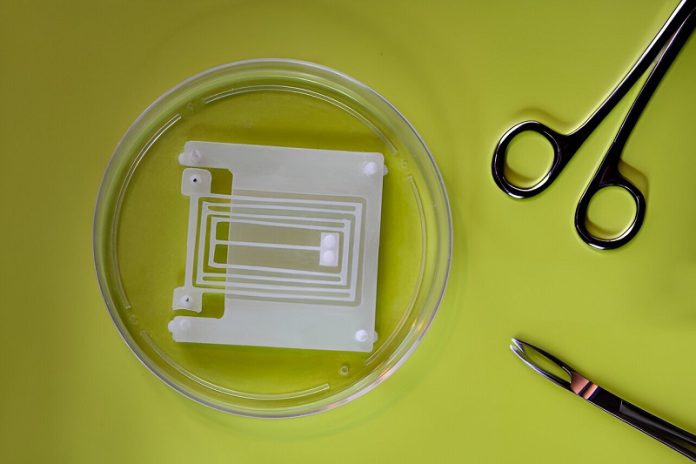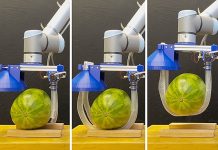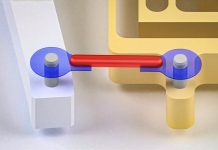
In a groundbreaking development, engineers at MIT have created a new kind of device that could make robots move using muscles, just like humans and animals do.
This new invention, resembling a spring, acts like a flexible skeleton that can help muscle-powered robots move in more efficient and controlled ways.
Muscles are amazing parts of our bodies that help us move, lift things, and do all sorts of activities.
They’re much better at these tasks than most of the artificial devices currently used in robots.
Recognizing this, scientists have been trying to use real muscle tissue to make robots that can walk, swim, or hold things with a gentle grip.
However, making these biohybrid (part biological, part artificial) robots work well has been a challenge because there hasn’t been a one-size-fits-all solution for integrating muscle movements into robot designs.
The MIT team’s breakthrough involves a specially designed spring, called a “flexure,” that maximizes the movement a muscle can produce. Imagine stretching a rubber band around two pencils – when you pull the band, the pencils move closer together. The muscle does something similar with the flexure, but much more effectively.
In tests, muscle tissues attached to the flexure stretched it five times more than previous designs. This means the robot parts move much further with each muscle contraction, making the robot’s movements more powerful and precise.
This invention is exciting because it offers a common foundation upon which all sorts of muscle-powered robots can be built. The flexures can be combined in different ways to make robots that can perform a variety of tasks, from walking and swimming to grabbing and holding objects.
“These flexures are like a skeleton that lets us turn muscle movements into many different types of actions in a very predictable way,” says Ritu Raman, the lead researcher from MIT. This could open up new possibilities for creating more versatile and efficient robots.
Muscles, when not attached to anything, will just twitch in place without doing anything useful. By attaching muscle tissues to the flexure, the researchers can direct the muscle’s energy into specific movements.
The design of the flexure ensures that when a muscle contracts, its force is focused in one direction, making the movement more efficient.
The team’s design was inspired by the work of Professor Martin Culpepper at MIT, who specializes in creating precise mechanical devices. The flexure they developed is incredibly soft and flexible in one direction but stiff in others, ensuring that muscle contractions are translated into significant movements.
Beyond making robots move, this technology could also help us understand more about muscles themselves, like how they get tired and how they can be made stronger.
The researchers even envision creating small, muscle-powered robots that could perform tasks inside the human body, such as aiding in surgeries.
With this innovation, the future of robotics could see machines that move more naturally and efficiently, powered by the same kind of muscles that allow us to run, jump, and carry.
It’s a step toward robots that are not just tools but partners, capable of more delicate and complex actions.
Source: MIT.



